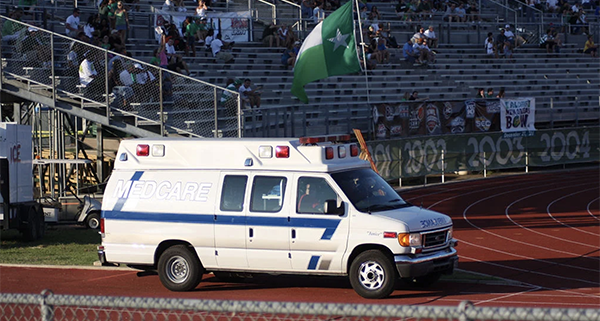Should You Be Worried About Cardiac Arrest With Your Child?
Earlier this month, Buffalo Bills football player Damar Hamlin went into cardiac arrest on live TV after tackling an opponent. Parents of children who play contact sports often lament the risks of broken bones or concussion, but a heart attack? Statistically, Hamlin’s injury is a rarity. Commotio cordis, the onset of a fatal arrhythmia that results from a strike to the chest at a critical moment during the heartbeat, is most often seen in baseball. In fact, of the few reported cases, more than half are caused by a baseball hitting the chest. Another 30% of cases result from softballs and hockey pucks colliding with the patient’s chest. The timing of the hit is critical. There is a period of only 200msec (that’s 2/1,000s of a second) in which the impact can cause the heart’s rhythm to change so drastically. Quick thinking saved Hamlin’s life.
Having an AED (Automatic External Defibrillator) accessible can mean the difference between life and death if used in the first few minutes. While it helps to have CPR or Advanced Life Saving training, anyone can use an AED. It’s a portable device that, when its stickers are placed on the patient, can accurately analyze the heart’s rhythm and deliver a shock (also known as defibrillation) to re-start a normal heart rate. If used within 3 minutes of a patient collapsing from cardiac arrest, it can exponentially increase the chances of survival. Making sure there is an AED on the campuses of gyms, schools, churches, synagogues, arenas, and anywhere people gather can mean the difference between life and death.
From UH Pediatrician and PSI Medical Director – Dr. Carly Wilbur
Click here for more great insights from Dr. Wilbur.
Find out how PSI provides AED, CPR, First Aid Training and much more!






Leave a Reply
Want to join the discussion?Feel free to contribute!